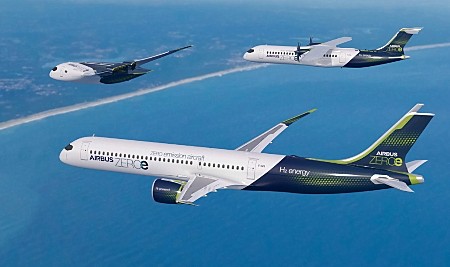Developers of aircraft are experimenting with biofuels, hydrogen, fuel cells, and batteries. But the challenge of seeing an all-electric commercial passenger airplane in the foreseeable future appears dim. Where electric vehicles on the ground are seeing extended range in battery technology, that’s not what’s holding back electric-powered airplanes. Getting off the ground requires considerations that go beyond the amount of power generated by batteries. For example weight considerations alone make batteries far more problematic than using fossil fuels to power aircraft.
Designers of aircraft are challenged by the amount of energy that can be harvested from batteries by weight, as well as the cooling and wiring requirements in designed electric-powered commercial airplanes. Then there is the range issue. Just how far can an electric airplane fly on a single charge?
The barrier to entry can be found in an energy density comparison between jet fuel-powered aircraft and those powered by batteries. Expressed in watt-hours or kilojoules per kilogram (Wh/kg), batteries today fall well short. A jet-fueled engine packs 12,000 Wh/kg. Current battery packs produce 250 Wh/kg. The differential in favour of liquid fuels is 48:1.
Battery packs regardless of whether they are fully charged or not remain the same weight during aircraft operations throughout a flight. Jet fuel is consumed lightening the aircraft as it flies which helps extend its range. So when considering an optimal performance range for an electric aircraft, distances are short, and weight considerations limit the passenger and payload capacity. The current thinking in aircraft design is an optimal range of 400 kilometres (250 miles) and seating capacity of 19.
NASA sees battery improvements by 2030 approaching 350 Wh/kg which would all for all-electric short-range 30-seat airplanes. By 2035 if energy densities hit between 400 and 500 Wh/kg, we could see electric and electric-hybrid models with seating capacity of 50.
In the end, hydrogen fuel cells that produce zero carbon emissions could be the game-changer. Their energy density in terms of Wh/kg today is already more than twice that of current battery packs (530 Wh/kg compared to 250). Fuel cells can be stacked and are comparatively lightweight. A hydrogen fuel source stored onboard could continuously feed the cells with the end output zero carbon emissions.
Airbus, the European aircraft manufacturer, sees a future in hybrid drive trains that combine fuel-cells with gas turbines. The company is working with ElringKlinger, a German fuel-cell developer, on ZEROe, a hybrid-powered aircraft. Several models are contemplated (see the above image), for regional short flights and longer-distance routes.
Lead ZEROe architect, Matthieu Thomas, notes that “hydrogen fuel cells could be a great alternative [to batteries] because they can generate—with zero emissions—significantly more power and energy for a given weight. This makes fuel cells an extremely interesting technology to achieve our ambitions.”
Even the gas turbine component in the Airbus ZEROe could include an electric motor for a unique hydrogen-fed fuel-cell hybrid-electric propulsion system. The remaining issue Airbus is working on is to overcome the reinforcement requirements for stored hydrogen onboard. Hydrogen tanks would be heavier and bulkier than those currently used to store jet fuel. New material composites or weight reductions found elsewhere in the airframe are contemplated. Airbus expects to have its first commercial ZEROe models flying by 2035.
















[…] Energy Density Limitations […]